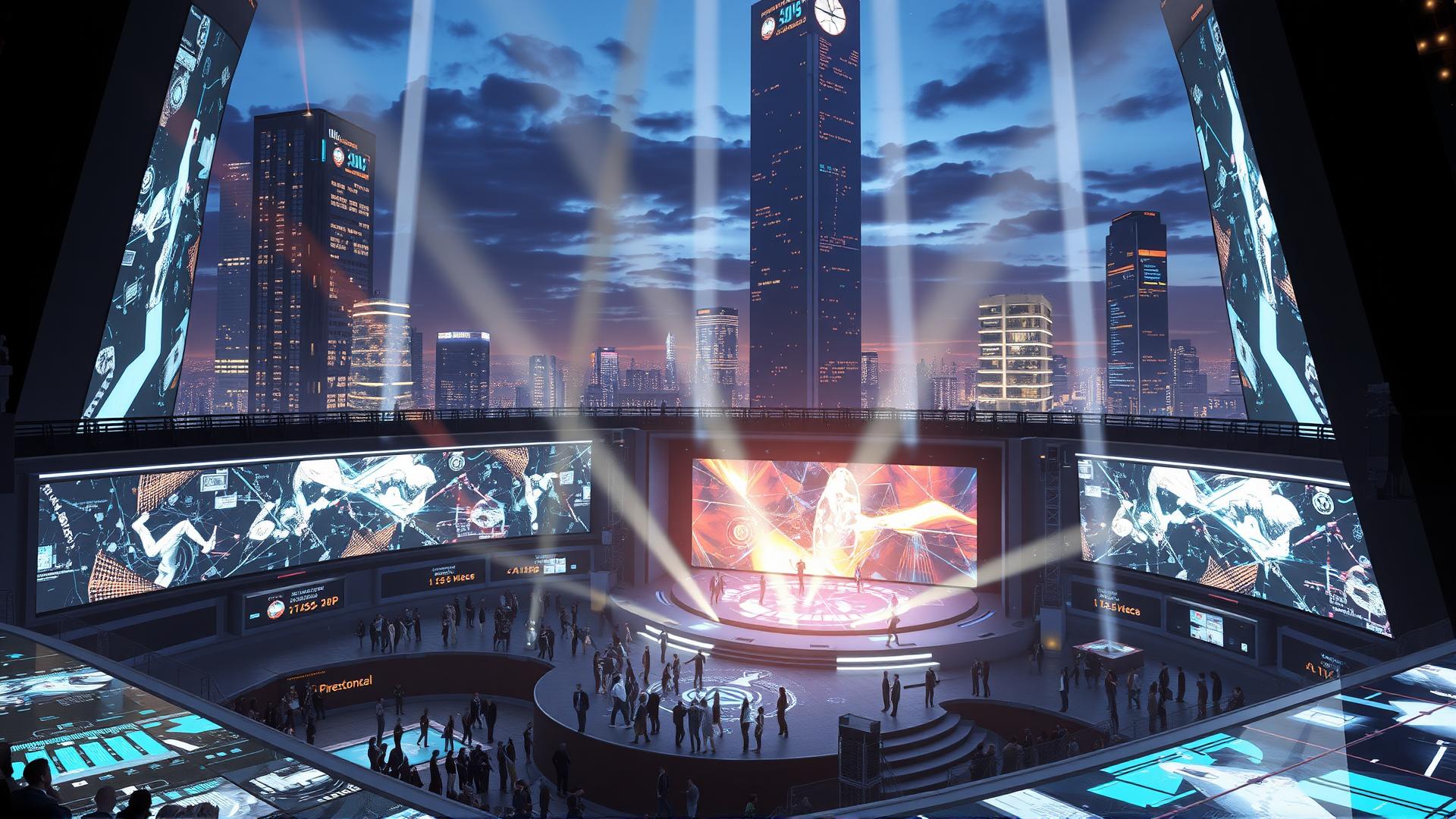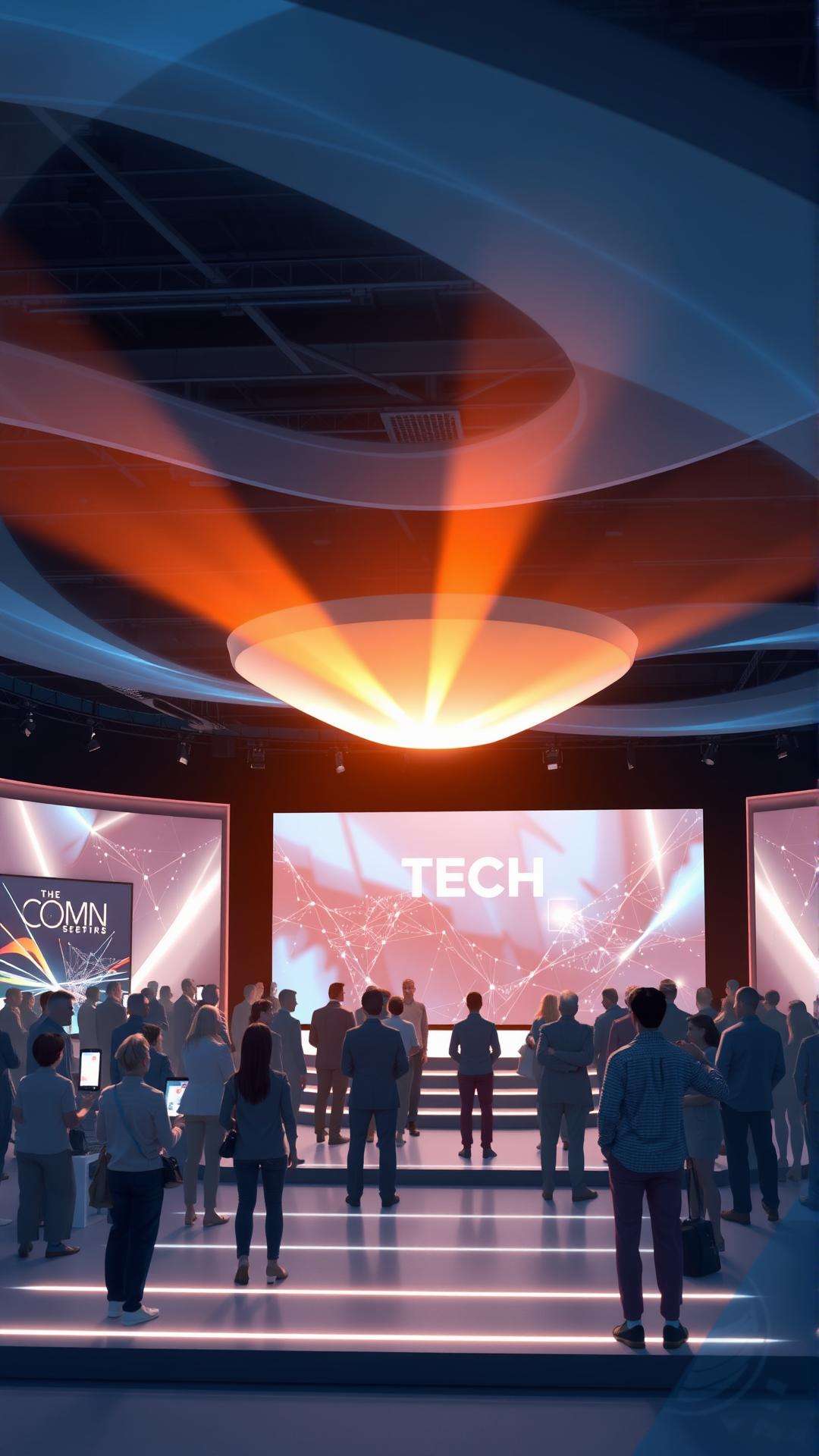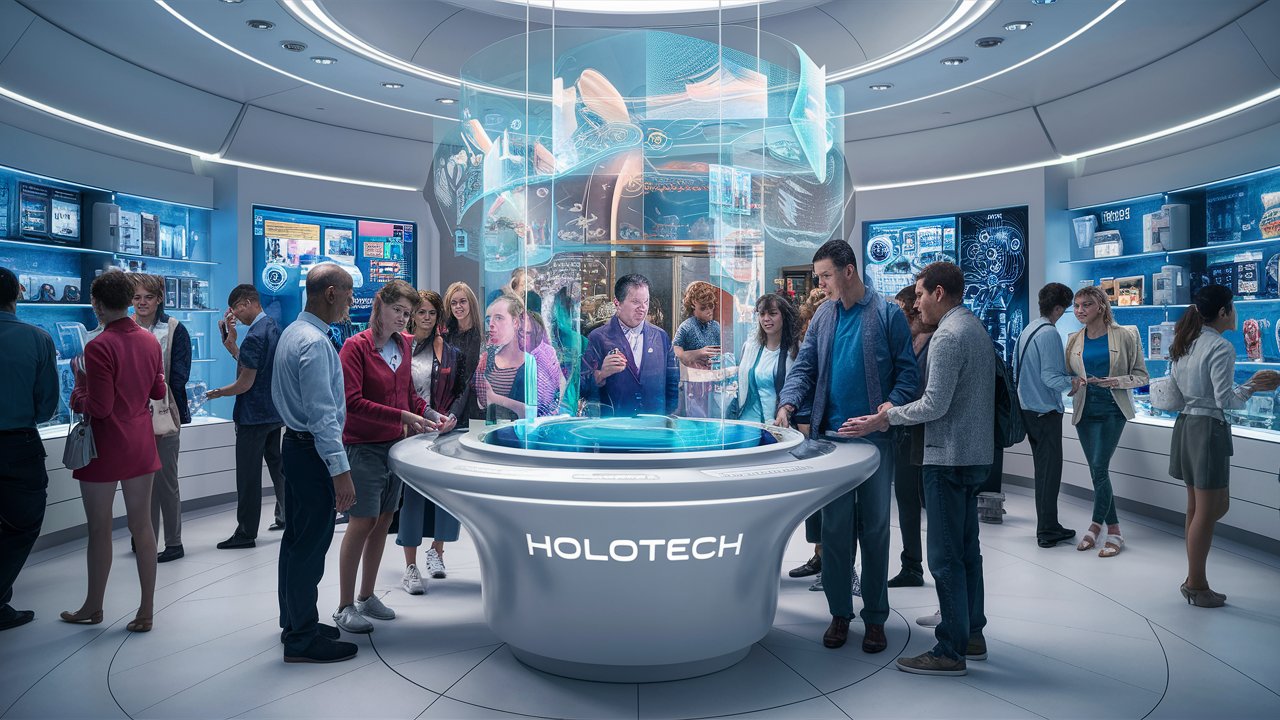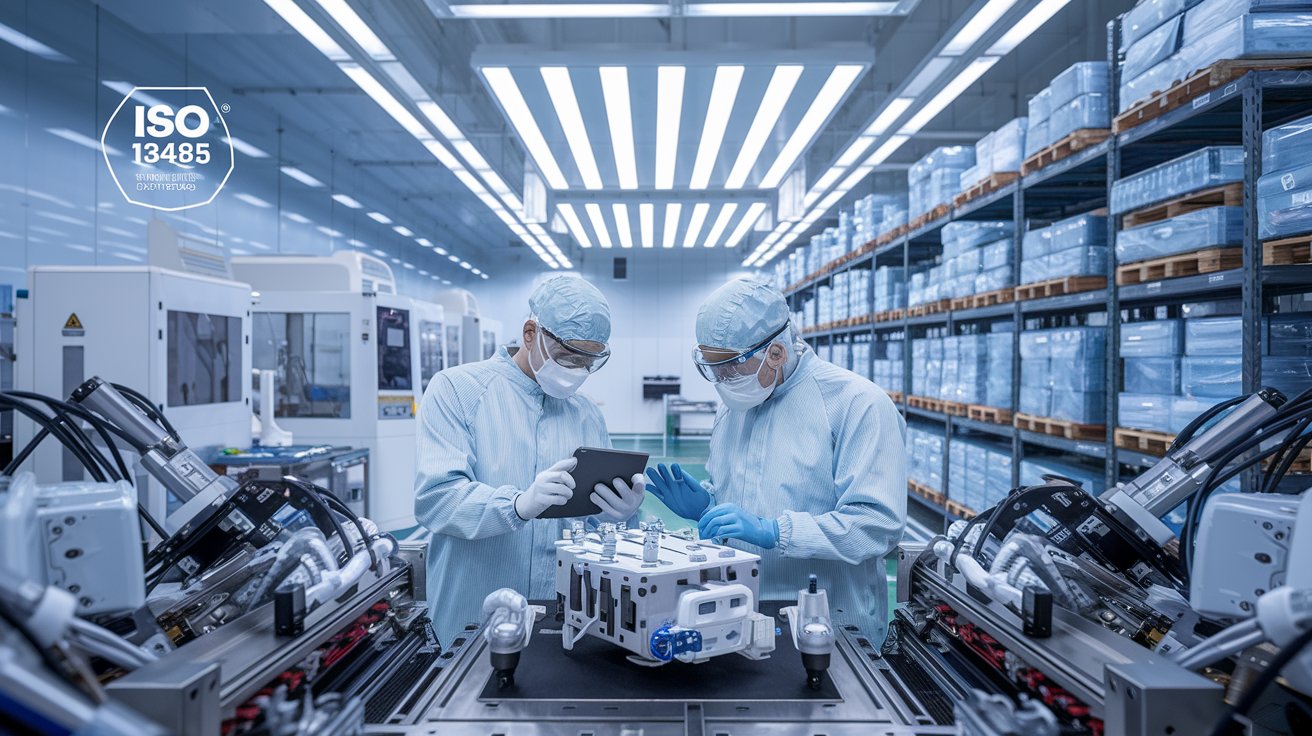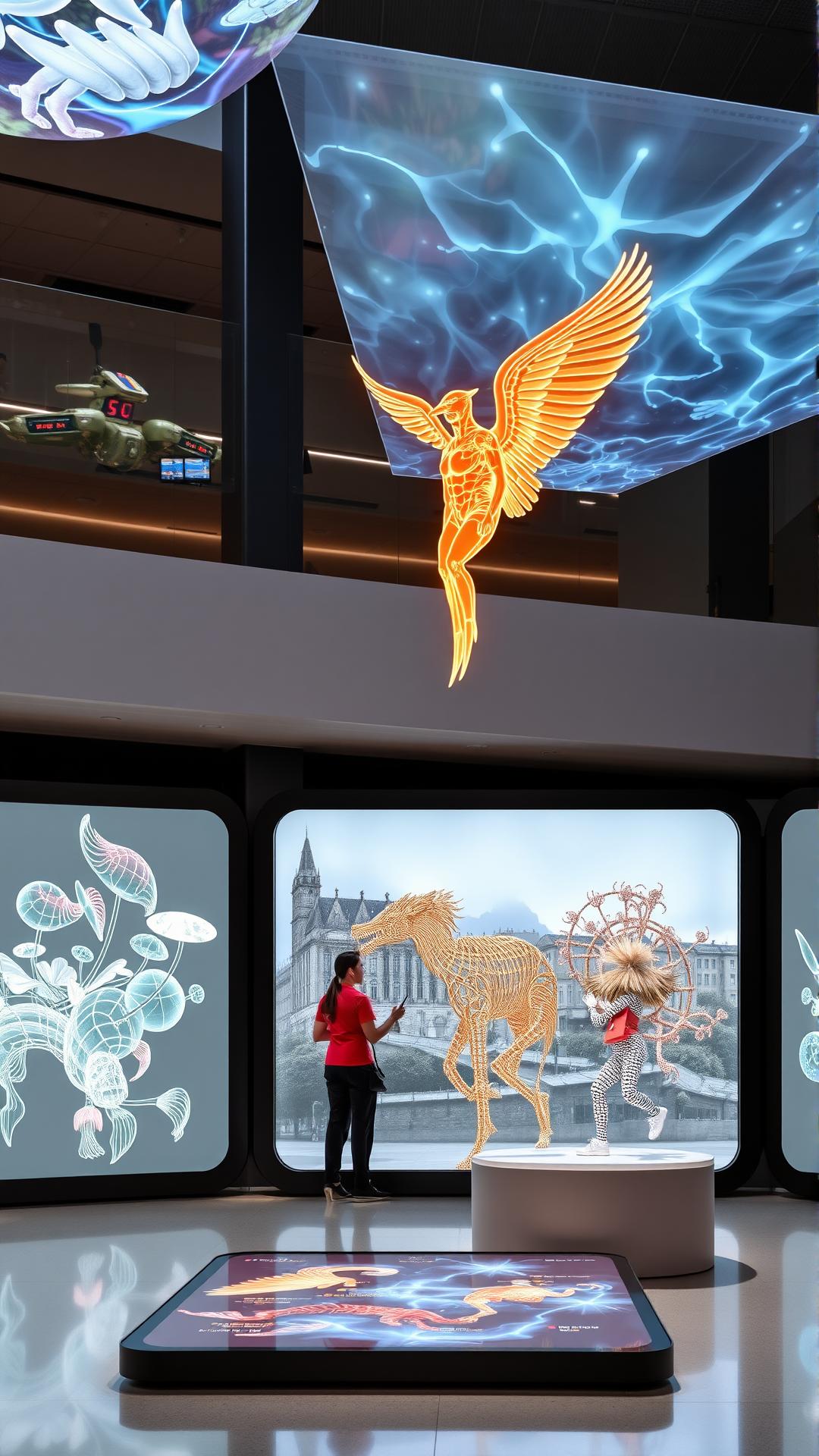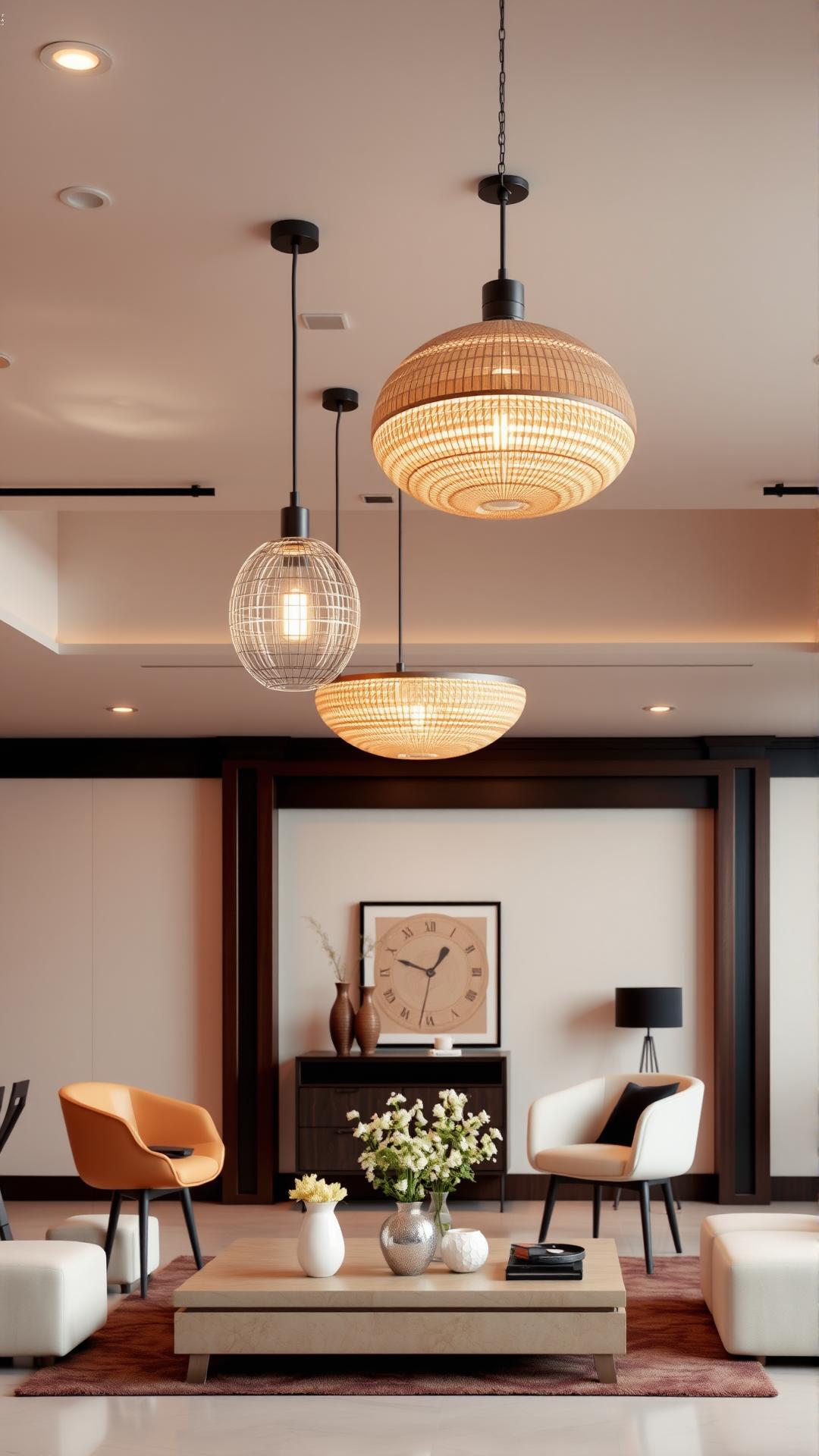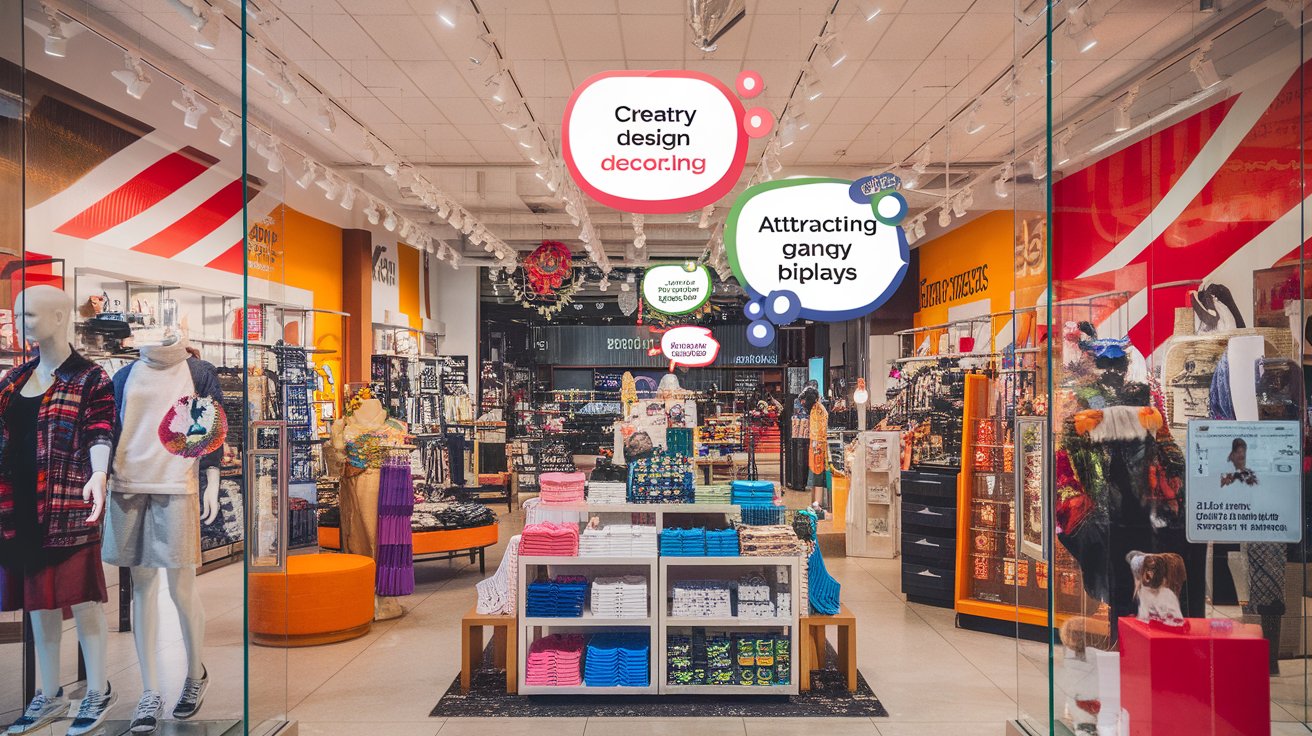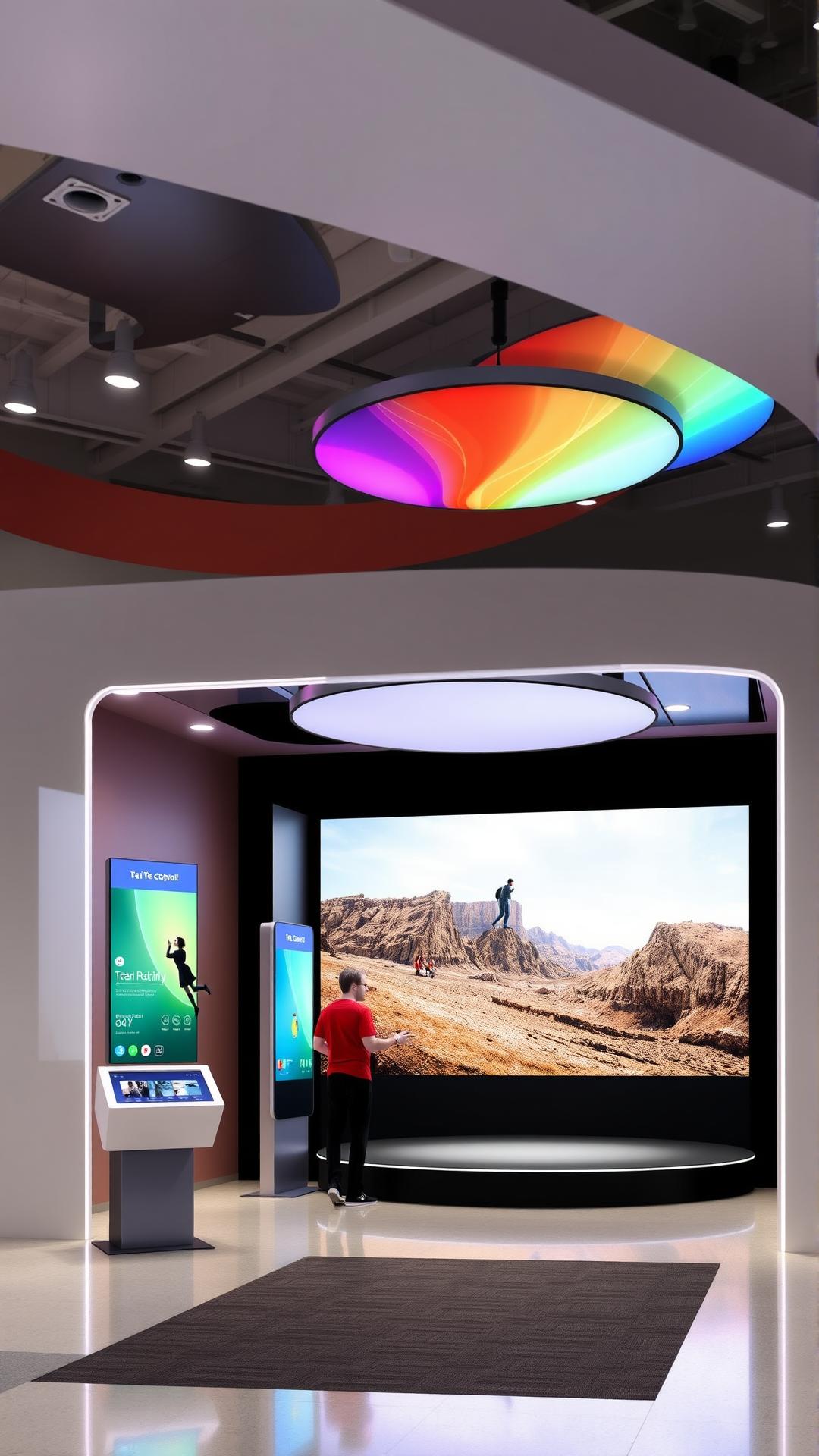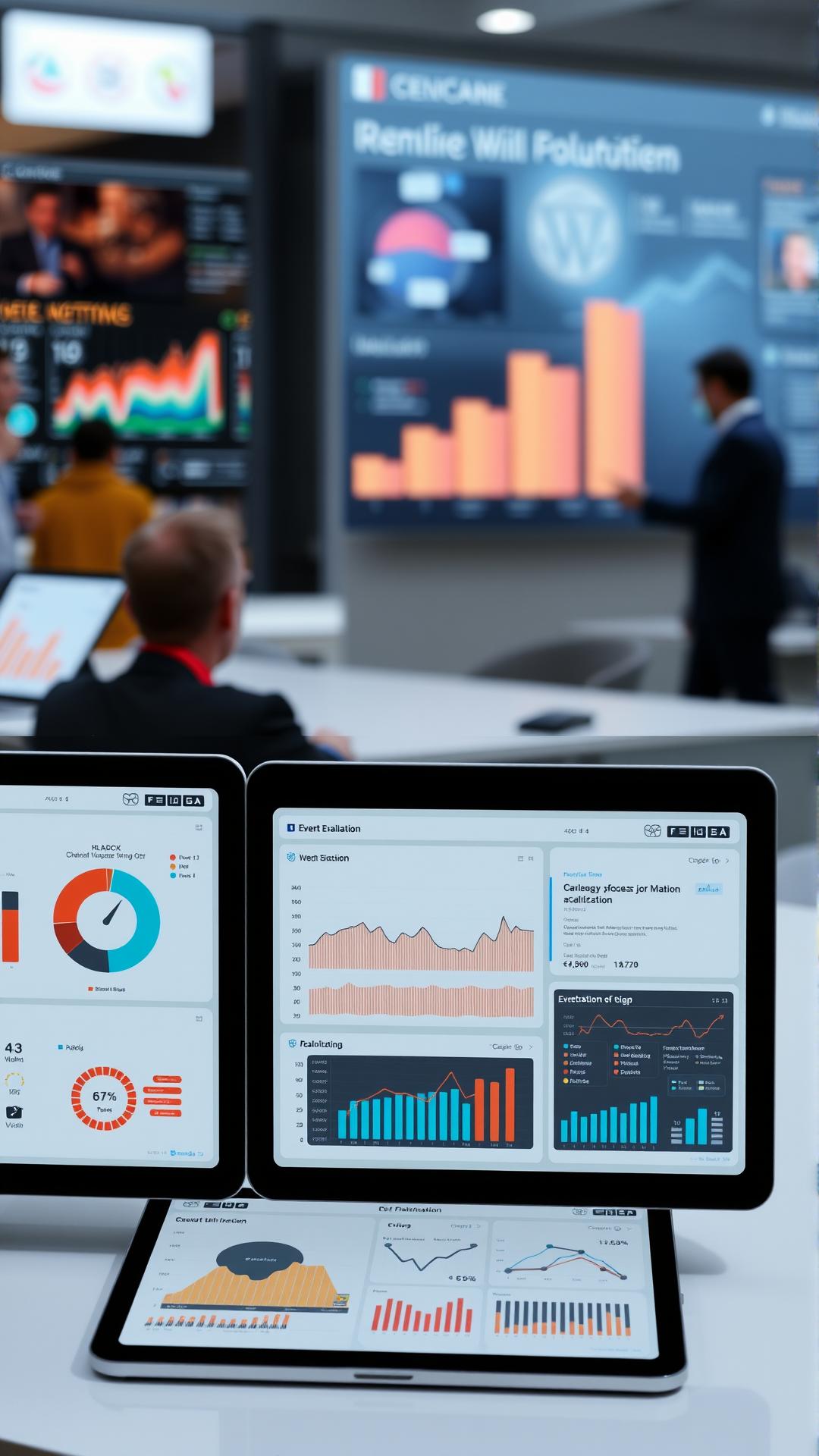Introduction
Event design has evolved significantly in recent years, especially in the context of modern technology celebrations. Now more than ever, event planners are tasked with creating experiences that engage participants both physically and digitally. This article explores various event design concepts tailored for tech-focused gatherings, which not only enhance attendee interaction but also align with the vibrant themes of innovation and advancement in technology.
Understanding the fundamentals of event design is crucial to creating memorable gatherings. This involves an intricate blend of creativity, strategic thinking, and awareness of current tech trends. By focusing on interactive installations, immersive environments, and effective use of audiovisual elements, planners can curate experiences that resonate with a tech-savvy audience. Throughout this article, we will delve deeper into the various aspects of event design that can transform a conventional tech celebration into a groundbreaking experience.
The Importance of Event Design in Tech Gatherings
Core Principles of Event Design
Event design serves as the backbone of any successful gathering, particularly in modern tech celebrations where innovation and aesthetics intertwine. The primary principles of event design, including space management, ambiance creation, and audience engagement, become significantly relevant as technology continues to redefine expectations. A well-designed event can transform a simple gathering into an immersive experience, making attendees feel connected and engaged with the content and each other.
Space management involves the effective use of available areas to create dedicated zones for networking, presentations, and interactions. It is crucial to maintain a flow that encourages movement while facilitating conversations. For instance, a tech event might benefit from an open layout that allows easy access to various interactive stations, enabling spontaneous discussions between attendees and innovators alike.
The creation of ambiance encompasses the interplay of lighting, sound, and decor to evoke specific emotions and responses from the audience. For tech gatherings, incorporating high-tech visuals like LED displays and augmented reality elements can enhance the atmosphere, making it more stimulating and conducive to creativity. Tailoring these aspects to reflect the themes of innovation and forward-thinking can lead to memorable experiences that resonate beyond the event itself.
Engaging Audiences through Innovative Event Design
Engagement is at the heart of event design, and its importance is magnified in tech celebrations where attendees expect both information and entertainment. By utilizing principles such as storytelling and interactivity, event designers can create narratives that guide the audience through the experience. For instance, a keynote presentation could incorporate visual storytelling techniques that weave in elements of the latest technological advancements while encouraging audience participation, thereby transforming passive listeners into active participants.
The integration of innovative technologies—such as real-time polling apps or live Q&A sessions—can enhance interaction during presentations. This not only keeps attendees engaged but also provides valuable feedback to speakers, creating a dynamic dialogue that enriches the overall experience. When event design aligns with the core expectations of a tech-savvy audience, it fosters an environment ripe for networking, collaboration, and idea generation, leaving a lasting impression long after the event concludes.
Interactive Installations That Engage Audiences: Innovative Concepts for Modern Tech Celebrations
Creating an immersive environment is a fundamental aspect of modern tech celebrations, and interactive installations play a crucial role in this design philosophy. These installations not only captivate attendees but also encourage participation, fostering a sense of community and collaboration. By integrating technology with artistic expression, event planners can transform standard exhibition areas into dynamic landscapes of innovation.
Types of Interactive Installations
Several types of interactive installations can enhance tech events, each designed to engage audiences in unique ways:
- Augmented Reality (AR) Experiences: By using AR technology, event participants can interact with digital overlays that enhance physical environments. These experiences often feature gamification elements, allowing users to explore products or services through their smartphones or AR glasses. This not only educates the audience but also entertains them, creating memorable interactions.
- Virtual Reality (VR) Zones: Setting up VR stations enables guests to immerse themselves in fictitious worlds or real-life simulations. Whether it’s exploring new product features in a gamified setting or experiencing a virtual tour of a company’s headquarters, VR installations offer engaging narratives that captivate users.
- Interactive Projection Mapping: This technology allows event planners to transform any surface into a dynamic backdrop. By projecting animations or interactive content onto walls, floors, or objects, planners can create a captivating environment that tells a story or showcases the tech brand’s innovations.
- Hands-On Workshops: Workshops where participants can learn new technologies or skills that relate to the event’s theme encourage a participatory atmosphere. These installations promote interaction not only among attendees but also between them and industry leaders, fostering networking opportunities and collaboration.
- Feedback Stations: Touchscreens or kiosks where guests can provide immediate feedback on the event or engage in discussions about future innovations help promote continuous interaction. Such installations also facilitate real-time data collection, which can be invaluable for future planning.
Incorporating these installations into a tech event emphasizes the importance of engagement in the overall design strategy. By enabling attendees to become active participants, these interactive elements enhance the event experience, ensuring that memories forged are not just about the products showcased but also about the connections made and ideas exchanged.
The Role of Aesthetic in Event Experience
Aesthetic Elements in Tech Event Design
In tech celebrations, the aesthetic elements play a pivotal role in shaping the attendee experience. Crafting an atmosphere that resonates with the modern audience requires a keen understanding of how lighting, color schemes, and decor can seamlessly integrate to enhance the overall impact of the event. Each of these elements functions in harmony to create an immersive environment that draws participants into a world of innovation and excitement.
Lighting, for instance, serves not only a functional purpose but also creates moods that align with the event’s theme. Utilizing adjustable LED lights can lend versatility to the ambiance, allowing for variations that mirror the stages of the event, whether it be high energy during product launches or softer tones during intimate networking sessions. Incorporating dynamic lighting techniques, such as projections and color washes, can transform traditional venues into futuristic spaces, amplifying the allure of technology and sparking creativity among guests.
The choice of color schemes is equally significant in establishing an aesthetic that reflects the essence of technology. Using a palette that blends vibrant hues with cooler tones can evoke a modern, sleek atmosphere. Colors associated with the brand or the tech industry—like blues symbolizing trust and reliability or greens representing innovation—can be woven into various aspects of decor, from table settings to stage designs. Such thoughtful combinations infuse the venue with identity while resonating emotionally with attendees, providing a visual narrative that aligns with the event’s core message.
Decor elements also play a crucial role in enriching the tech event experience. Integrating interactive decor—such as digital installations or augmented reality sculptures—can enhance engagement and create memorable interactions. Incorporating sustainable materials into decor not only aligns with modern ethical standards but can also reflect an innovative spirit. The aim is to transform the space into a canvas that embodies the forward-thinking ethos of the tech world while making attendees feel connected to the innovations being celebrated.
Through a meticulous approach to aesthetic design involving lighting, color, and decor, organizers can craft a cohesive experience that is both immersive and memorable. This artistic strategy not only supports the event’s objectives but also fosters a deeper connection between attendees and the technologies on display.
Sustainability in Event Design: Eco-Friendly Practices for Modern Tech Celebrations
Increasing Relevance of Sustainability in Event Design
In recent years, the tech industry has recognized the urgent need to adopt sustainable practices across all sectors, including event design. As tech companies gather to showcase their latest innovations, the commitment to environmental stewardship has grown in importance. Organizing a modern tech celebration requires not only a focus on cutting-edge technologies but also a profound consideration for minimizing ecological impact. The emphasis on creating eco-friendly events is reshaping how designers conceptualize and execute ideas, ensuring that the solutions offered resonate with the values of their attendees.
Innovative Eco-Friendly Event Design Ideas
To align with sustainability goals, event planners can implement a variety of innovative design strategies. The use of sustainable materials is essential; opting for recycled, biodegradable, or upcycled decor can significantly reduce waste. For example, centerpieces made from repurposed electronics or biodegradable containers filled with native plants can provide a tech focus while also being environmentally responsible.
- Digital Invitations: Limiting paper usage by utilizing digital invitations and event resources ensures a reduced carbon footprint.
- Eco-Friendly Catering: Partnering with caterers who prioritize local, organic ingredients not only supports local economies but also minimizes transport-related emissions.
- Reusable Signage: Implementing reusable signage can reduce waste and keep event items relevant for future gatherings.
- Virtual Components: Incorporating virtual attendance options allows for broader participation while minimizing travel emissions.
- Sustainable Swag: Offering eco-conscious promotional items, such as reusable bags or solar-powered gadgets, aligns with sustainability efforts and serves to educate attendees on eco-friendly practices.
Employing technologies that track the environmental impact of the event can further align with a tech-centric audience’s expectations. For instance, utilizing applications that measure carbon footprints or promote sustainable transportation options enhances the overall experience while fostering a culture of accountability.
As the design of tech events evolves, prioritizing sustainability is no longer an option but a necessity. Through careful planning and creative solutions, event designers can create memorable experiences that reflect both innovation and an unwavering commitment to environmental responsibility.
Integrating Technology Seamlessly: Best Practices for Event Design
In the context of modern tech celebrations, the integration of technology into event design must enhance the participant experience, ensuring it remains engaging rather than overwhelming. Striking the right balance can transform a typical gathering into a memorable and impactful event that resonates deeply with attendees.
Crafting Interactive Experiences
One of the foremost strategies for integrating technology harmoniously is the use of interactive elements that encourage engagement. Consider incorporating touchscreens or tablets where guests can access personalized schedules, feedback forms, and event information. This not only allows for a tailored experience but also minimizes clutter, as digital platforms effectively replace traditional materials. Providing virtual reality (VR) or augmented reality (AR) experiences can deepen engagement, enabling participants to immerse themselves in product demonstrations or interactive storytelling without complexity.
Utilizing Data Wisely
Event planners should leverage data analytics to inform decisions while respecting participant privacy. Using registration data to tailor experiences can enhance relevance; for instance, suggesting sessions based on attendee interests or previous interactions. However, ensure that any form of data collection remains transparent. Utilize QR codes for attendees to access specific presentations or materials seamlessly, which not only streamlines the experience but also reduces paper waste, aligning with sustainability efforts previously discussed.
Optimizing Connectivity
Integrating reliable high-speed Wi-Fi throughout the event space is essential. Prioritizing connectivity ensures that attendees can engage with tech-driven elements such as live polls, social media interactions, or even networking through dedicated apps without interruptions. Create designated zones for charging devices to help participants stay connected without the anxiety of running out of battery power. This small touch can significantly impact the overall event experience.
Fostering Atmosphere through Technology
Use technology to create an atmosphere that enhances the overall theme. Consider ambient lighting installations or LED screens that can change based on the event’s mood. This enhances the visual appeal and creates a cohesive aesthetic that resonates with a modern tech celebration. Audio-visual elements should support the event narrative and not distract; therefore, employing skilled professionals for equipment setup and management is vital.
Finally, provide guides or staff members who can assist attendees in navigating the technological aspects of the event. When participants feel supported, they are more likely to engage fully, allowing the technology to enhance their experience rather than serve as a barrier.
Evaluating Success in Event Design: Measuring Outcomes for Tech Celebrations
In the context of designing modern tech celebrations, evaluating success transcends the initial planning and execution phases. Meticulous assessment of outcomes and participant experiences is necessary to understand the impact of event design. Key metrics and feedback methodologies play an instrumental role in shaping future events and enhancing overall value for attendees.
Key Metrics to Assess Event Design Success
Beginning with quantitative metrics, several key performance indicators (KPIs) can establish benchmarks for success:
- Attendance Rates: Tracking the number of participants against pre-event registrations can provide insights into the event’s appeal and marketing effectiveness.
- Engagement Levels: Quantifying attendee interaction through session participation, Q&A sessions, and networking opportunities can reveal how well the event design fosters connections.
- Technology Utilization: Monitoring app downloads and engagement analytics for digital tools used during the event can highlight how effectively technology is integrated into the experience.
- Sponsorship Engagement: Assessing the level of interaction and feedback from sponsors offers insight into the event’s value proposition for partners and stakeholders.
Qualitative Feedback Methods
While quantitative metrics are valuable, qualitative feedback is equally essential for a comprehensive assessment. Gathering direct input from attendees can illuminate the emotional and experiential quality of the event:
- Surveys: Deploying post-event surveys allows participants to share their thoughts on various aspects of the event design, including layout, content, and overall enjoyment.
- Focus Groups: Hosting focus groups with select attendees can facilitate in-depth discussions about their experiences, offering qualitative insights that surveys may not capture.
- Social Media Monitoring: Analyzing social media activity related to the event can provide real-time and authentic feedback on participant sentiments and perceptions.
- Follow-Up Interviews: Conducting one-on-one interviews with key stakeholders can lead to richer insights, particularly in understanding their specific needs and future expectations.
Incorporating both quantitative and qualitative methods ensures a holistic view of the event’s effectiveness, paving the way for informed decisions in future event designs. As technology continues to shape the landscape of events, leveraging these metrics will be vital in crafting meaningful and memorable experiences for participants. By focusing on these evaluative approaches, organizers can refine their strategies, enhance each tech celebration, and ultimately deliver greater value to all involved.
Conclusions
The art of event design plays a pivotal role in shaping modern tech celebrations. By incorporating innovative ideas such as interactive displays, seamless technology integration, and sustainable practices, event planners can create highly engaging and memorable experiences. As technology continues to evolve, so must the way we conceptualize and execute events. The insights presented in this article serve to inspire future tech gatherings that not only meet but exceed attendee expectations.
The effectiveness of an event lies in its ability to forge connections, leaving a lasting impression on its participants. Embracing new ideas in event design can elevate tech celebrations into extraordinary experiences that celebrate not just products but also the spirit of innovation and community within the technology sector.

